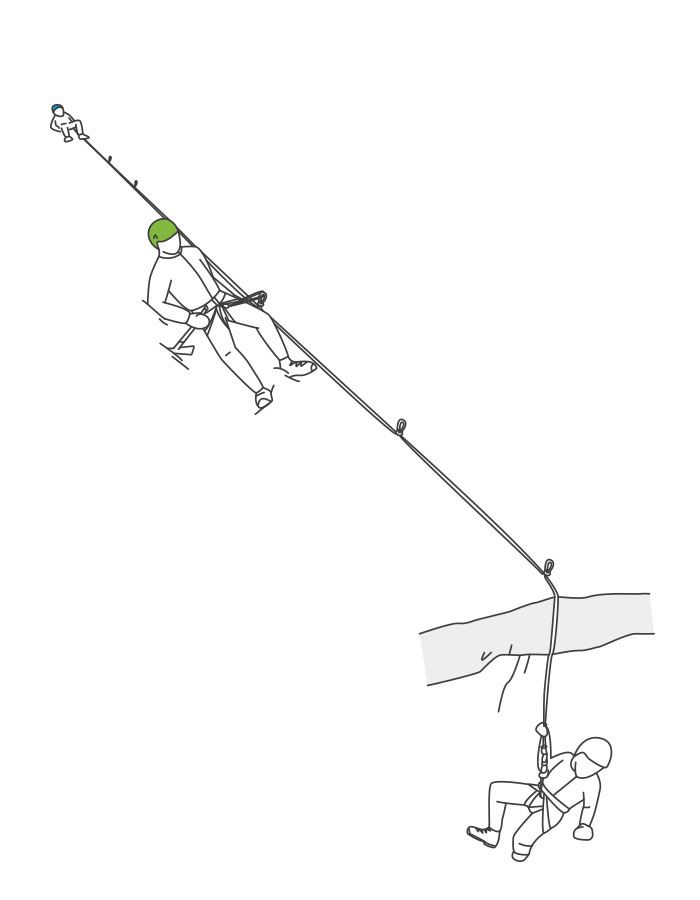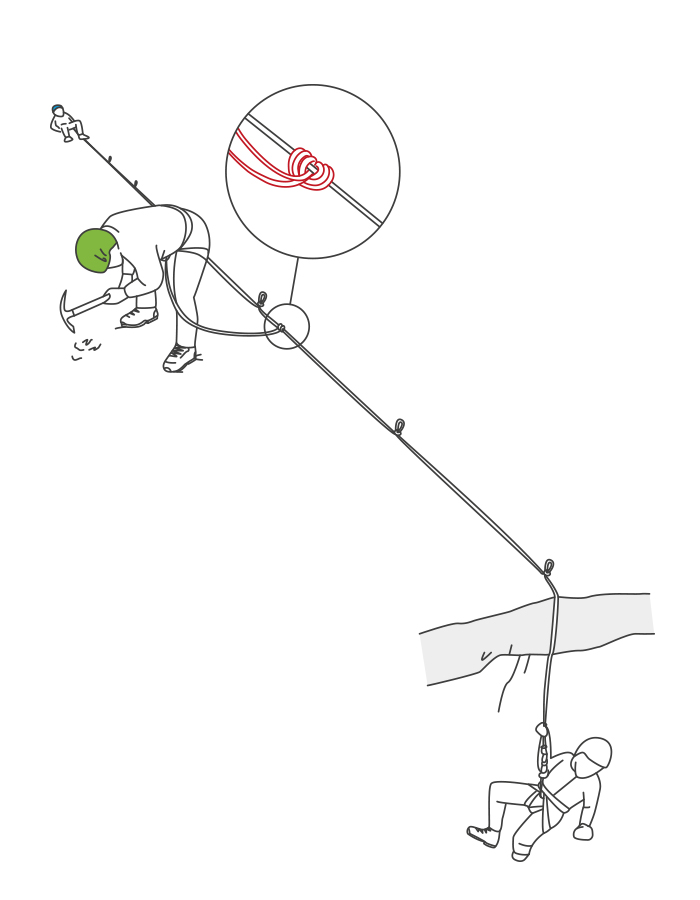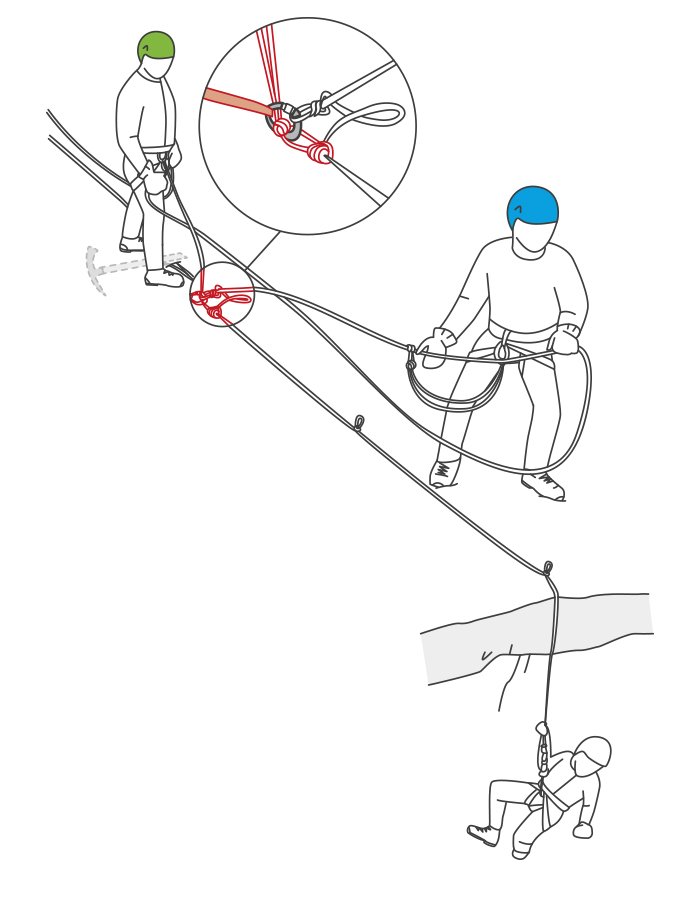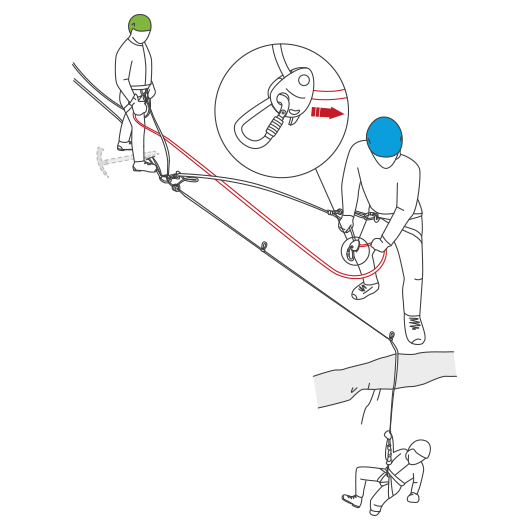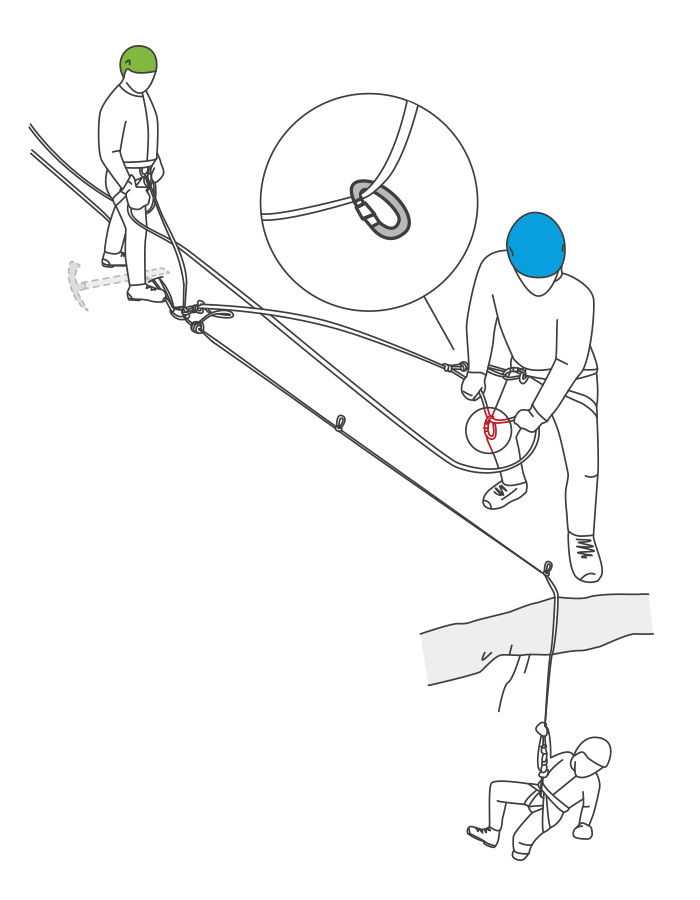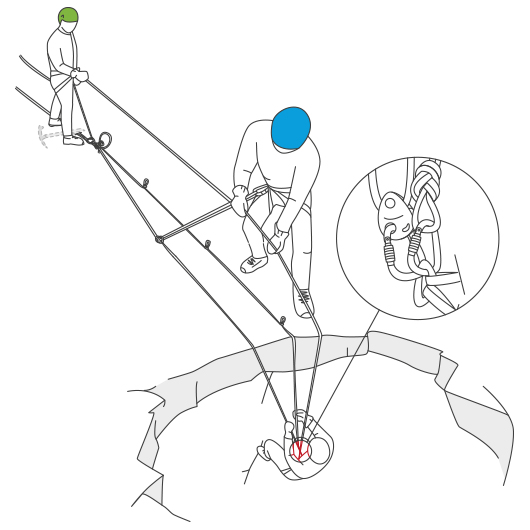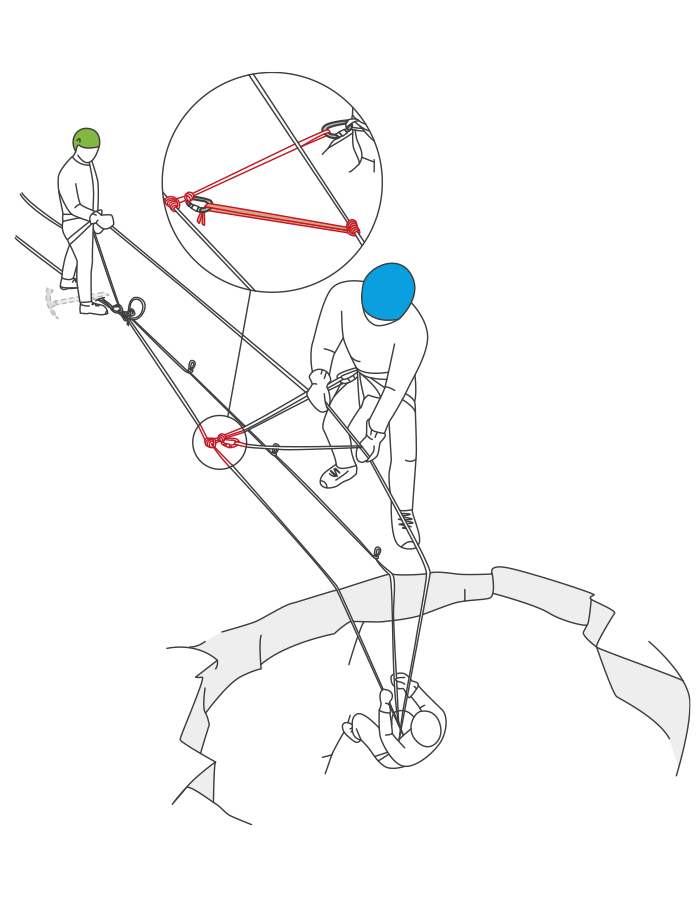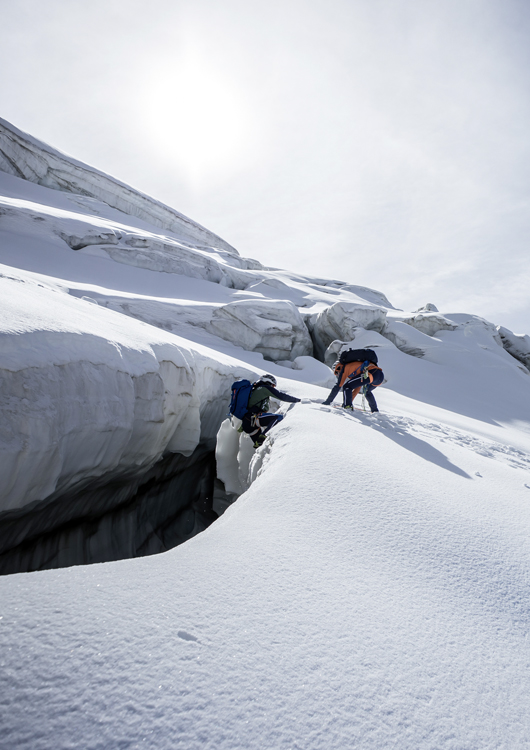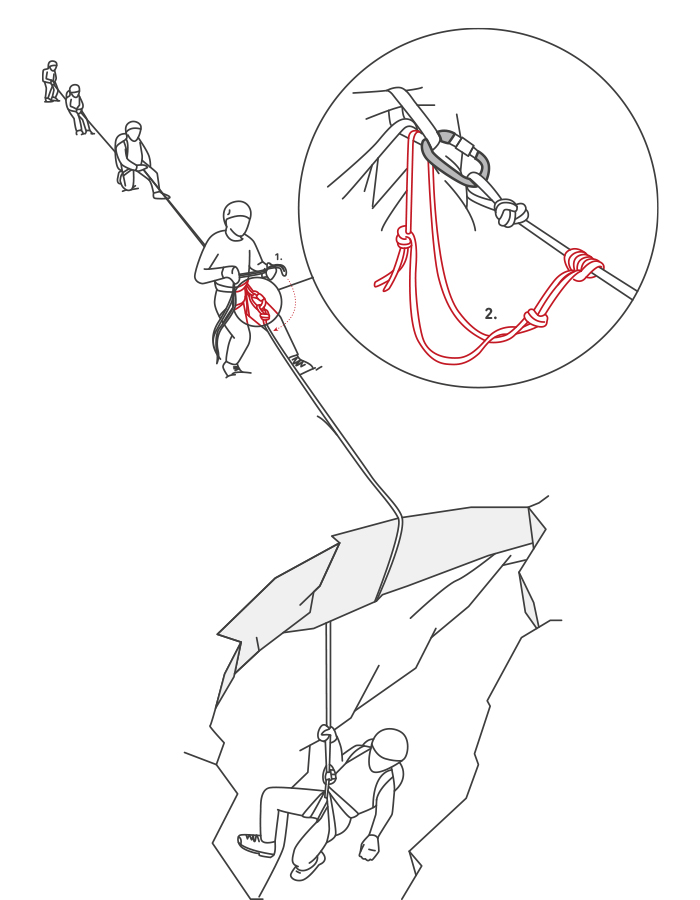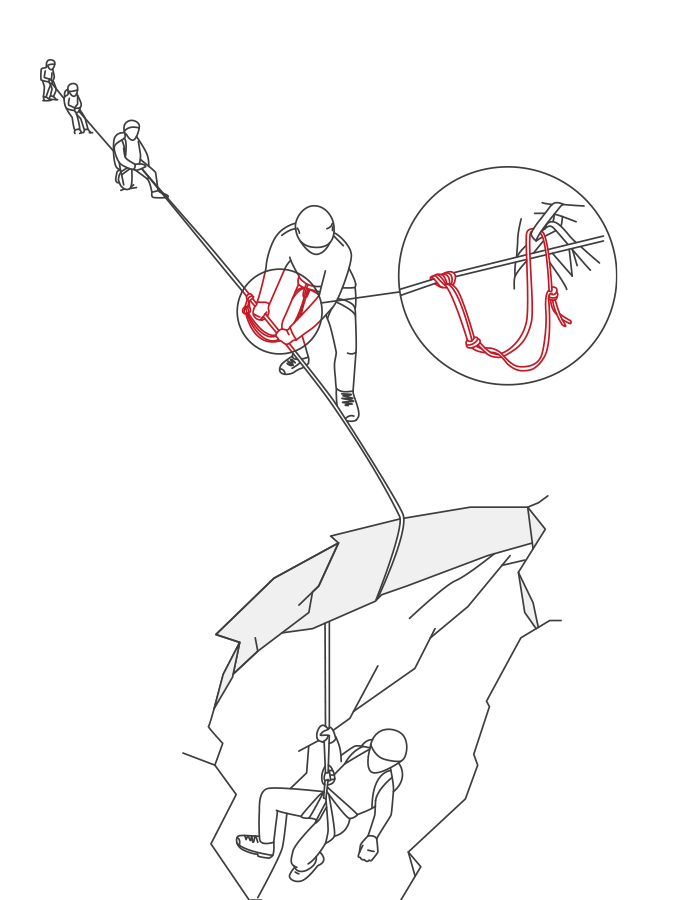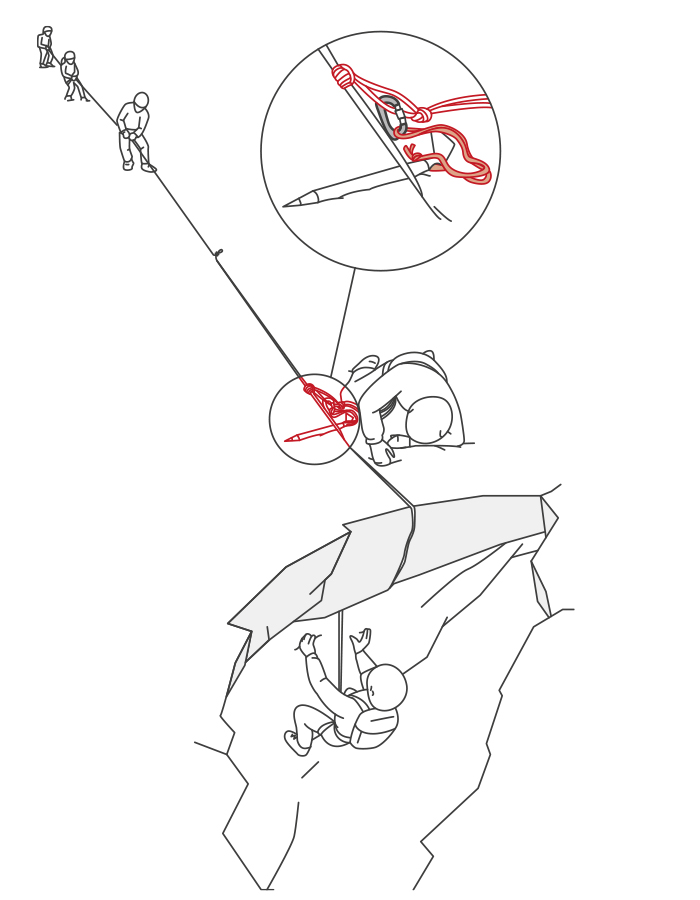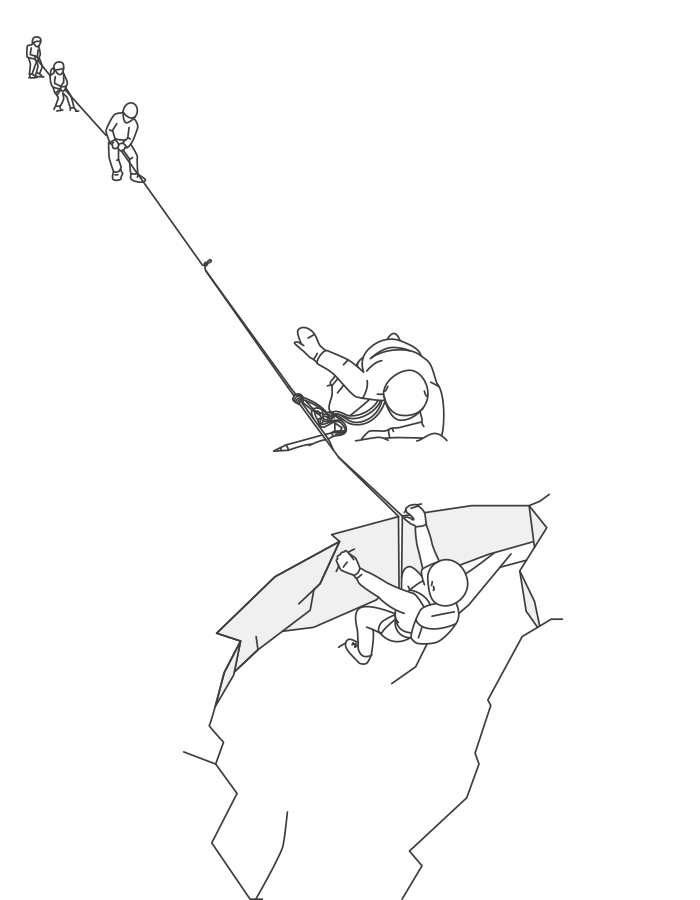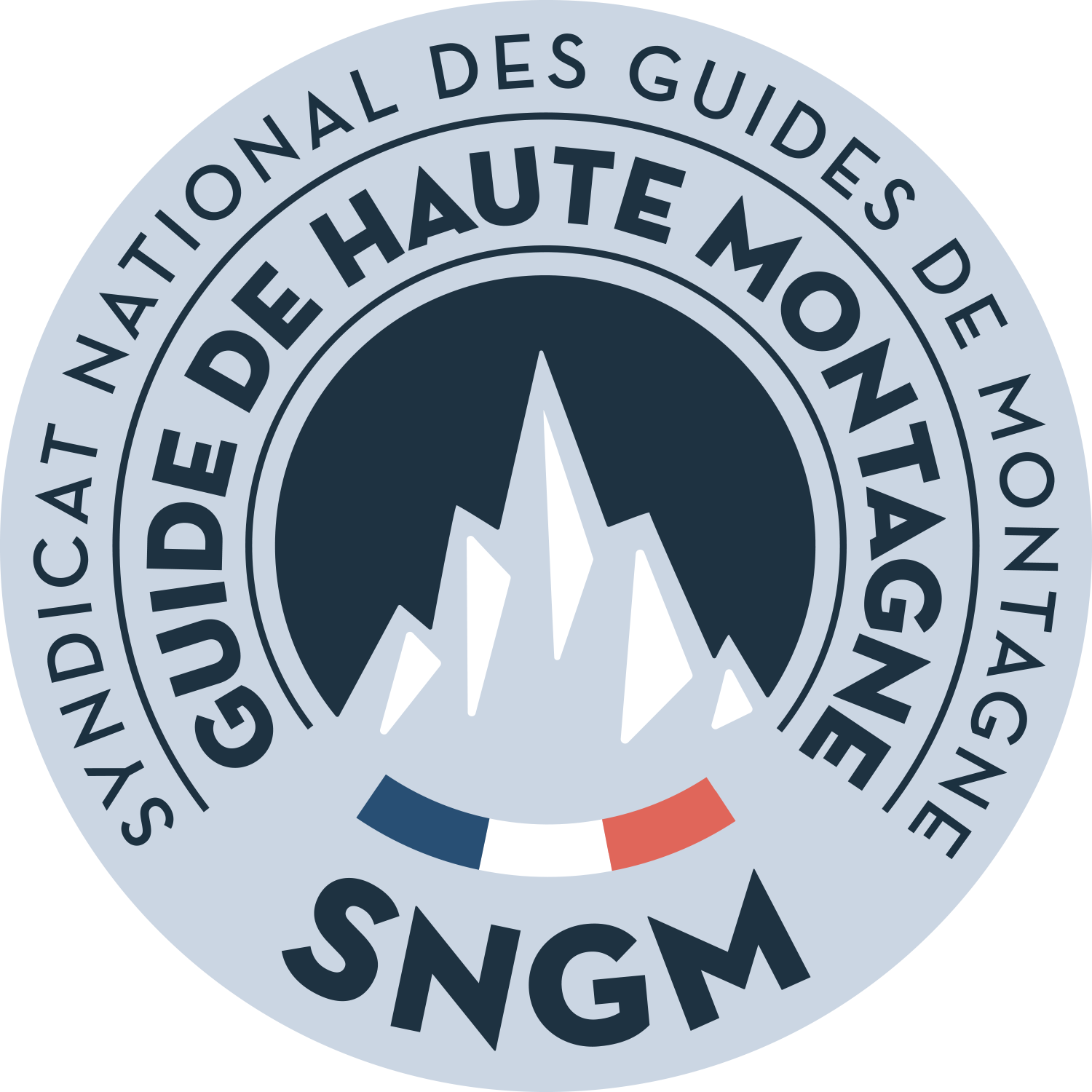Subchapter Rescuing a companion
RESCUE TECHNIQUES
In glaciated terrain you need to be prepared for a crevasse rescue. Rescue techniques are fairly demanding, but when you have mastered them and can act quickly and assuredly in an emergency, a crevasse fall will not usually be too serious.
Choosing the rescue method depends largely upon the number of members in the rope team – as well as upon their knowledge. Ideally, all members should be able to free themselves from a crevasse using self-rescue techniques. However, they should also at least be familiar with hauling and pulley rescue.
A fall generates high forces. So it is important to react immediately and to rapidly adopt a braking position. Then the rope team should remain calm and jointly agree upon the appropriate steps to be taken.
Video
Rescue method: Pulley
Pulley
For small rope teams (two or three people), the pulley system is used for rescuing partners. The pulley method halves the weight of the fall victim so that – in the best-case scenario – a strong partner can single-handedly haul a fall victim out. However, the technique calls for a number of items of equipment: sufficient spare rope, accessory cords, carabiners and a self-locking pulley.
A redirect pulley with reverse lock (such as Petzl’s Micro Traxion) reduces friction and will thus enable optimized force transmission – which makes hauling easier for two-man rope teams in particular.
Video
Rescue method: Hauling
Hauling
With larger rope teams of at least four people, hauling is the quickest, simplest and most common rescue method. The principle is very straightforward. The fall victim is pulled out of the crevasse by the remaining members of the rope team.


